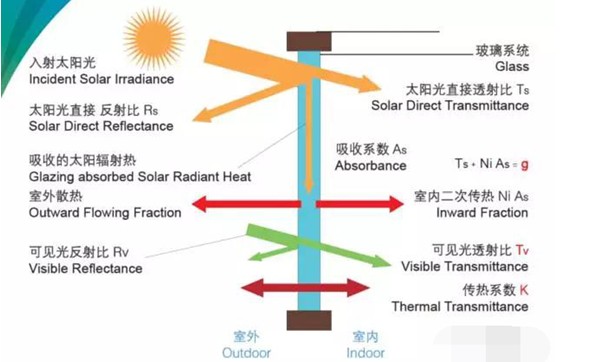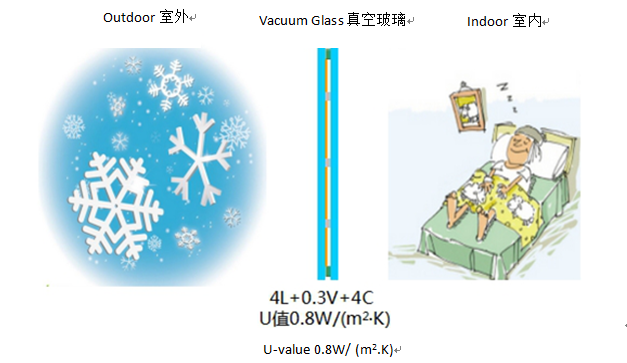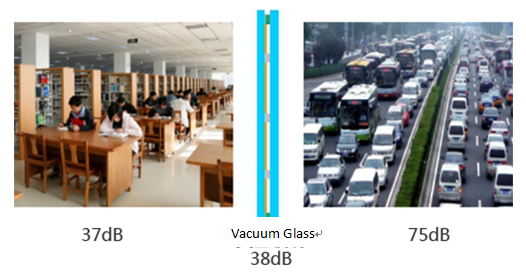
Thermal Insulation and Condensation-free Properties of Vacuum Glass

Heat transfer occurs by three modes: conduction, convection, and radiation. The vacuum chamber between the glass panes effectively minimizes the heat transfer by eliminating gas conduction and convection to such a degree often being neglected. Therefore, vacuum glass has better thermal insulation performance than insulated glass. The excellent thermal performance of vacuum glass is commonly expressed as thermal transmittance – U value. It represents the heat transmittance at the center of glass without the effects of the frame. U-value is the rate of transfer of heat (in watts) through one square meter of a structure, divided by the difference in temperature across the structure. It is expressed in watts per square meter kelvin, or W/m²K. As no air or water vapor molecules exist between the tightly sealed glass panes with high thermal resistance, the glass will have no condensation during wintertime.
Note: 0.8W/(㎡•K) is for vacuum glass in general, while LandVac is at 0.4W/(㎡•K).
Noise Reduction Property of Vacuum Glass

Sound waves need to travel through a medium such as a solid, liquid, or gas. Sound cannot be transmitted in a vacuum environment where the medium has been evacuated. Thus, the vacuum chamber of the vacuum glazing effectively blocks the transmission of sound waves. Vacuum glass demonstrates excellent sound insulating performance in medium and low frequencies. The weighted sound reduction index in 100-5000Hz (including low, medium, and high frequencies) range is 2dB higher than insulated glass. The calculation of the weighted sound reduction index in the 100-1000Hz (including low and medium frequencies) range also indicates 4dB more than insulated glass. While laminated glass and vacuum glass have similar performance in medium and low frequencies range, showing much higher sound insulation performance than insulated glass. As vacuum glass adopts rigid edge sealing, it results in higher sound reduction at low frequency and greater resistance to glass deformation in comparison with another type of insulated glass. The stiffness of the material affects the effectiveness of sound reduction, especially at low frequency. The stiffer the material is, the better performance of sound reduction it offers. In low frequencies, the sound reduction index may slightly drop in the wake of frequency increase as the result of the interaction between two properties: stiffness and mass.
